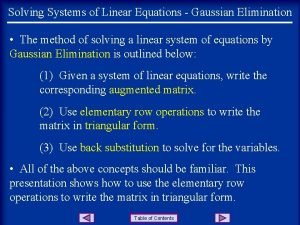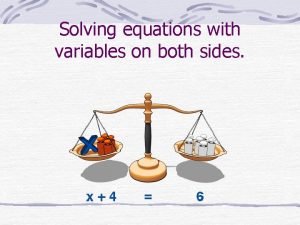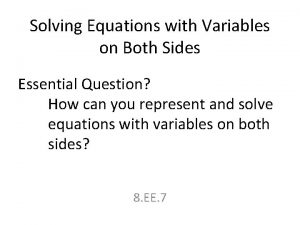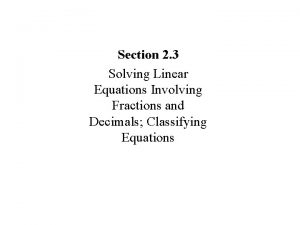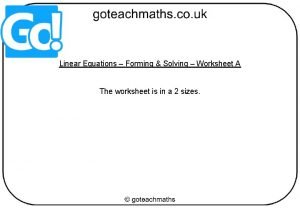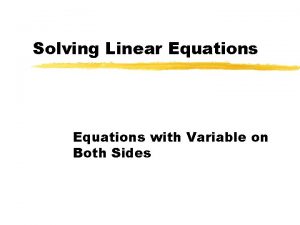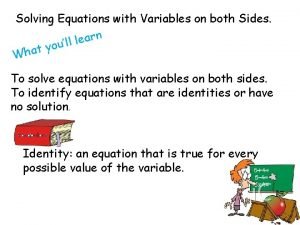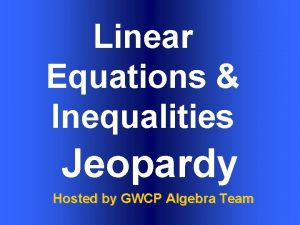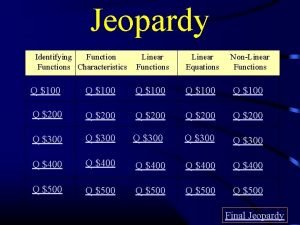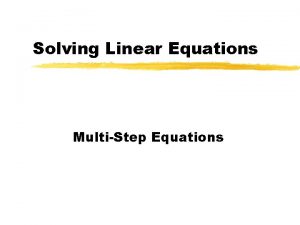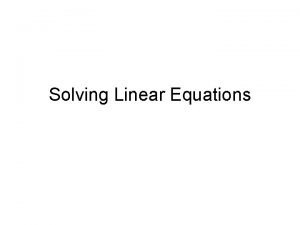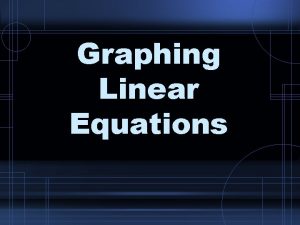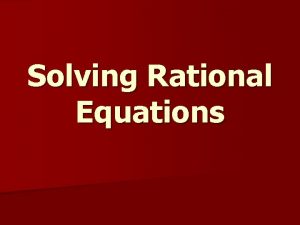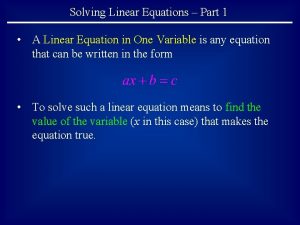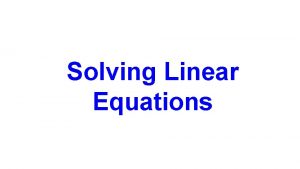1 3 Solving Linear Equations An equation Is









- Slides: 9

1. 3 Solving Linear Equations

An equation • Is a statement in which two expressions are equal. • A linear equation in one variable is an equation that can be written in the form ax+c=d A number is a solution of an equation if the statement is true when the number is substituted for the variable.

Two equations are equivalent: • If they have the same solution. • x – 4 = 1 and x = 5 are equivalent because both have the number 5 as their only solution.

The following transformations, or changes, produce equivalent equations and can be used to solve an equation. Addition Property Add the same number to both sides: if a=b, then a+c=b+c Subtraction Property Subtract the same number from both sides: if a=b, then a-c=b-c Multiplication Property Multiply both sides by the same nonzero number: if a=b, then ac=bc. Division Property Divide both sides by the same nonzero number: if a=b, then a/c=b/c

Solve an equation with a variable on one side: Write original equation Subtract 9 from each side Multiply both sides by 7/3 x = 14 Simplify

Solving an Equation with a Variable on Both Sides. Write the original equation. Subtract 5 n from each side Add 9 to both sides. Finally, divide both sides by 2.

Using the Distributive Property Distributive property Combine like terms.

Solving an equation with fractions Write original equation “clear” the fractions by multiplying by the LCD 12.

Assignment 1. 3
 Guassian elimination method
Guassian elimination method Solving linear equations variables on both sides
Solving linear equations variables on both sides How do you solve multi step equations
How do you solve multi step equations Linear equations involving fractions
Linear equations involving fractions Bar model equations
Bar model equations Forming equations worksheet
Forming equations worksheet Solving linear equations variables on both sides
Solving linear equations variables on both sides Solving linear equations variable on both sides
Solving linear equations variable on both sides Inequality jeopardy
Inequality jeopardy Solving linear equations jeopardy
Solving linear equations jeopardy
